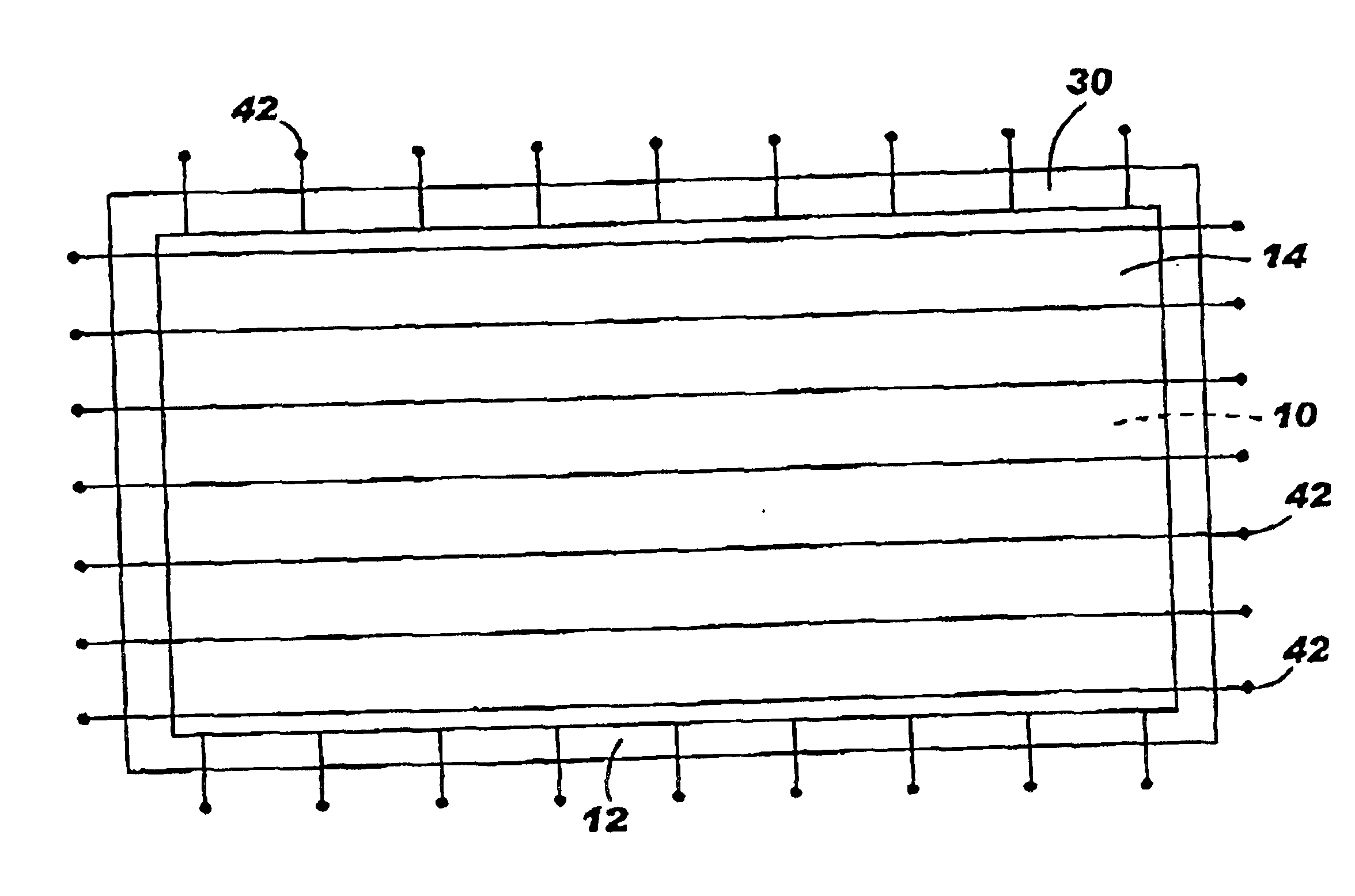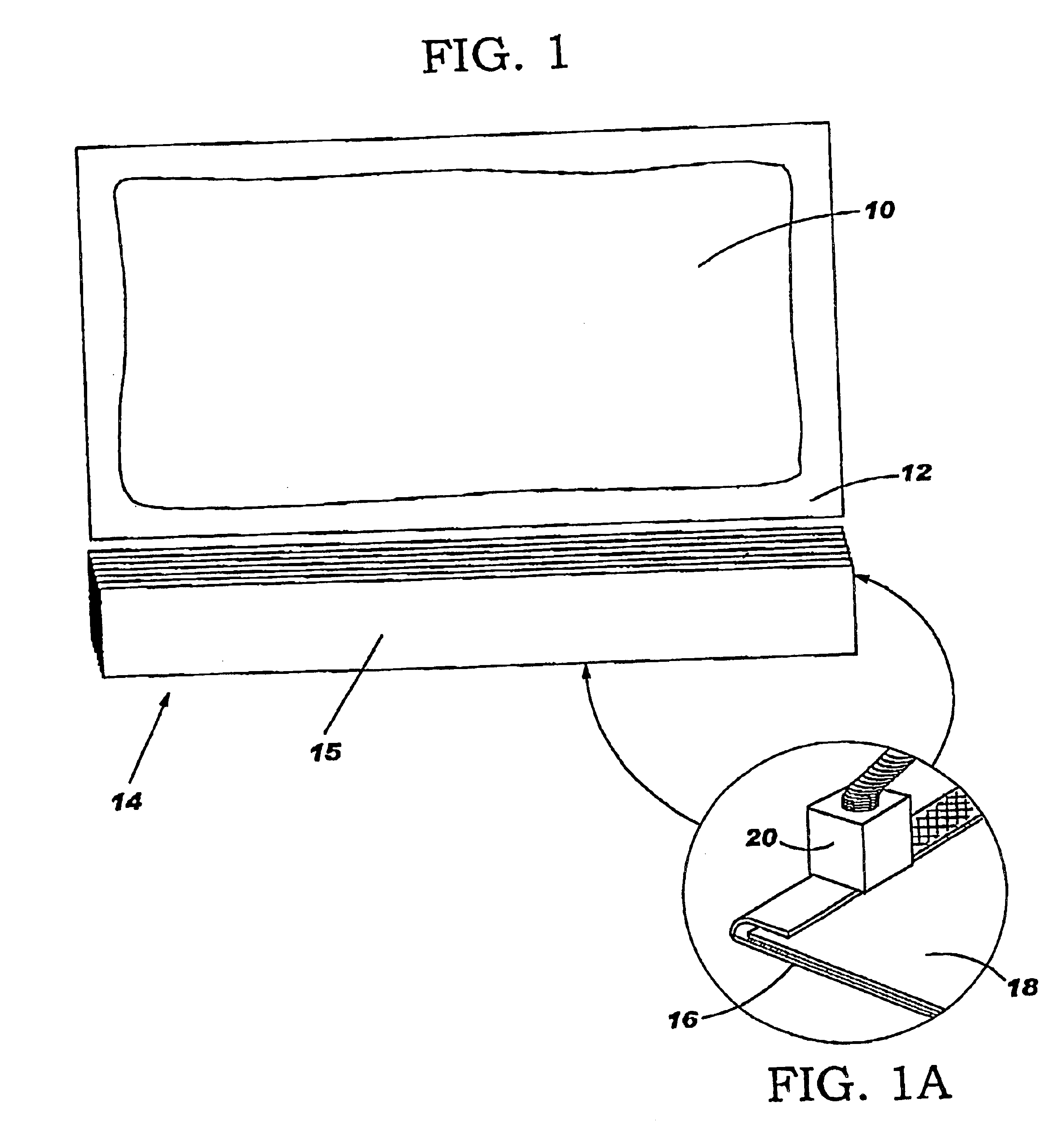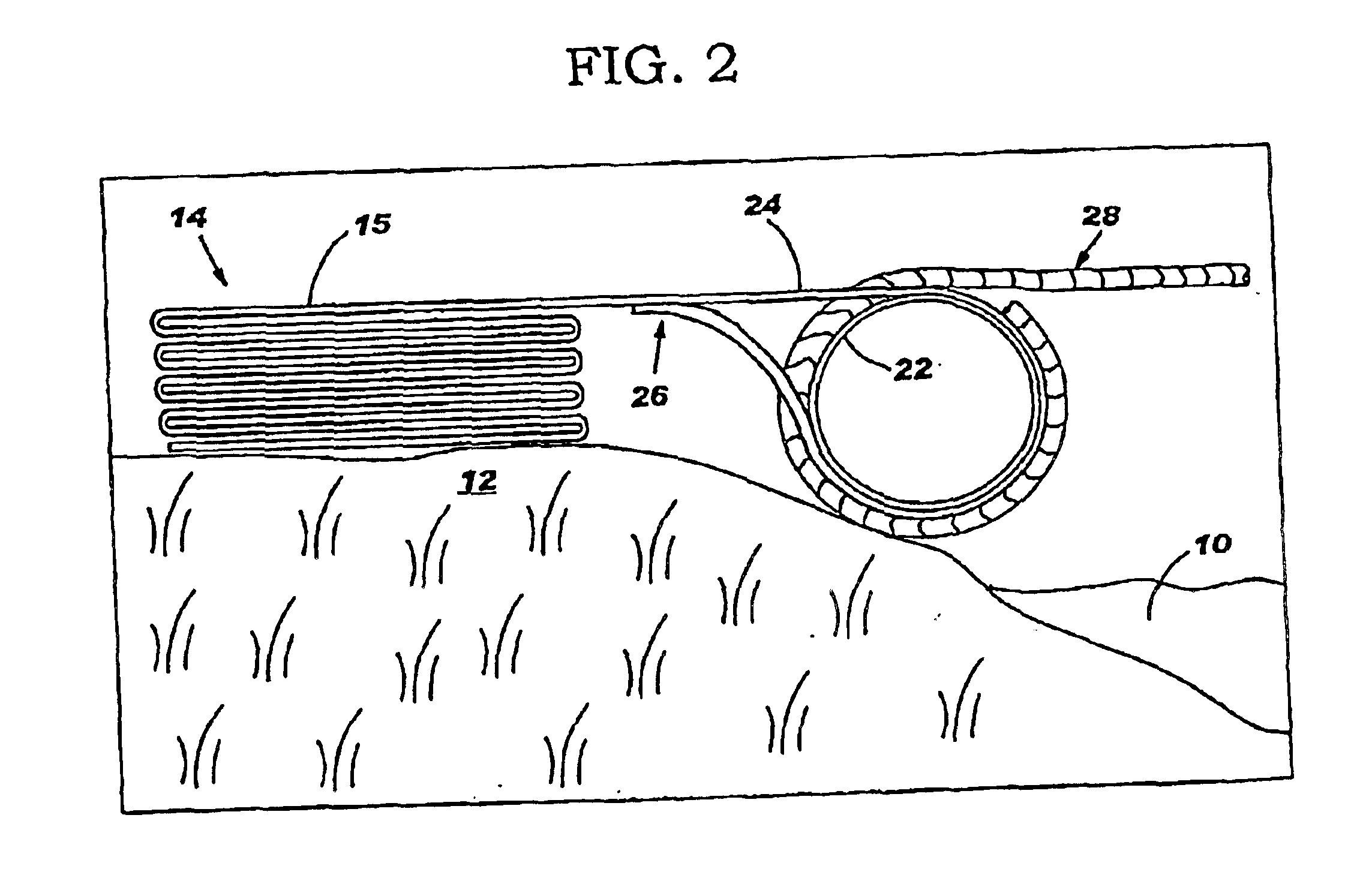Organic slurry storage basin cover
- Summary
- Abstract
- Description
- Claims
- Application Information
AI Technical Summary
Benefits of technology
Problems solved by technology
Method used
Image
Examples
Embodiment Construction
A lagoon basin cover system according to the invention has a cover that is fabricated on site from geotextile material which is typically a polypropylene fiber, non-woven, needle punched fabric that is stabilized to resist degradation due to ultraviolet light exposure. This is typically a felt-like material that has a specific gravity less than 1 and, therefore, floats like a sponge on water. It can stretch half of its original length, has a grab tensile strength of 200 lbs. or more, weighs 8 oz / yd or more, has an apparent opening size equal to a 100 U.S. Sieve, and has a permitivity of 1.5 gal. / min. / ft2 / sec or less. Stock rolls of geotextile material are fabricated into a single cover approximately the size of the top inside dimensions of the open storage structure.
A basin to be covered is evaluated to select the most efficient side of the basin upon which to build the cover. A berm is selected which will preferably be along the longest edge if the basin is a rectangle, the longest...
PUM
 Login to View More
Login to View More Abstract
Description
Claims
Application Information
 Login to View More
Login to View More - R&D
- Intellectual Property
- Life Sciences
- Materials
- Tech Scout
- Unparalleled Data Quality
- Higher Quality Content
- 60% Fewer Hallucinations
Browse by: Latest US Patents, China's latest patents, Technical Efficacy Thesaurus, Application Domain, Technology Topic, Popular Technical Reports.
© 2025 PatSnap. All rights reserved.Legal|Privacy policy|Modern Slavery Act Transparency Statement|Sitemap|About US| Contact US: help@patsnap.com



